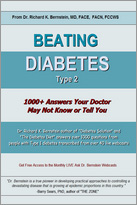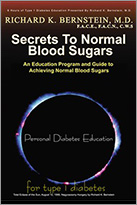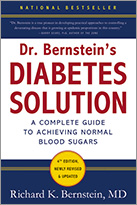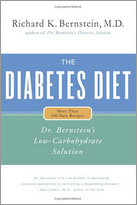You’re the only person who can be responsible for normalizing your blood sugars. Although your physician may guide you, the ultimate responsibility is in your hands. This task will require significant changes in lifestyle that may involve some sacrifice. The question naturally arises, “Is it really worth the effort?” As you will see in this chapter, others have already answered this question for themselves. Perhaps their experiences will give you the incentive to find out whether you can reap similar benefits.
Thomas G. Watkins is a forty-year-old journalist. His diabetes was diagnosed twenty-three years ago. For the past nine years he’s been following one of the treatment protocols described in this book for people who require insulin.
Frank Purcell is a seventy-six-year-old retiree who, like many of my married patients, works closely with his wife to keep his diabetes on track. Eileen, who goes by the nickname Ike, tells the first part of his story.
Joan Delaney is a fifty-three-year-old mother and financial editor. Her story is not unusual.
L.D. About half of all diabetic men are unable to have sexual intercourse, because high blood sugars have impaired the mechanisms involved in attaining erection of the penis. Frequently partial, albeit inadequate, erections are still possible; such “borderline” men may still be able to enjoy adequate erections for intercourse, after extended periods of normal blood sugars. We have seen such improvements in a number of patients—but only in those whose problem was caused mainly by neuropathy (nerve damage), as opposed to blockages of the blood vessels that supply the penis. When we initially saw L.D., he asked us to evaluate his erectile impotence. We found that the blood pressures in his penis and his feet were normal, but that the nerve reflexes in the pelvic region were grossly impaired. L.D.’s comments refer in part to this problem.
R.J.N., M.D. is board certified in orthopedic surgery. He has been following one of the regimens described in this book for the past three years.
J.L.F. is seventy-one years old and has three grandchildren. He still works as a financial consultant, and was a naval aviator in World War II. His blood sugars are currently controlled by diet, exercise, and pills called oral hypoglycemic agents. Thanks to the diet described in this book, his cholesterol/HDL ratio, an index of heart disease risk (see page 51), has dropped from a very high risk level of 7.9 to a below-average level of 3.0. His hemoglobin A1C test, which reflects average blood sugar for the prior four months, has dropped from 10.1 percent (very high) to 5.6 percent (nearly in the nondiabetic range). His R-R interval study (see Chapter 2), an indicator of injury to nerves that control heart rate, has progressed from an initial value of 9 percent variation (very abnormal) to a current value of 33 percent, which is normal for his age.
LeVerne Watkins is a sixty-eight-year-old grandmother and associate executive director of a social service agency. When we first met, she had been taking insulin for two years, after developing Type II diabetes thirteen years earlier. Her comments relate in part to the effects of large amounts of dietary carbohydrate, covered by large amounts of insulin, while she was following a conventional treatment plan.
A.D. is a fifty-five-year-old former typesetter whose diabetes was diagnosed fourteen years ago. As with many other people who use our regimen, his test of average blood sugar (hemoglobin A1C) and his tests for cardiac disease risk (cholesterol/HDL ratio) simultaneously dropped from high levels to essentially normal values.
Harvey Kent is fifty-one. He has known about his diabetes for approximately six years, and we suspect that he probably had it for three to four years prior to his diagnosis. He has a family history of diabetes, and his story is fairly typical.
Lorraine Candido has had Type I diabetes for more than twenty years and has been my patient for ten. She is in her sixties, and she and her husband, Lou, her “copilot,” work together to keep her blood sugars normal. Like a lot of happily married couples, Lorraine and Lou sometimes almost speak as one. When Lorraine comes in for treatment, Lou is with her. When she calls on the phone, Lou is on the other line. They talk about how starting the program changed their lives.
Elaine L. It isn’t unusual for people with diabetes to make major changes in other aspects of their lives once their blood sugars have been restored to normal after years of poor control. The changes that we see include marriages, pregnancies, and reentry into the workforce. The story of Elaine L. falls into the last category. She also points out the disabling fatigue that she experienced when her blood sugars were high. This problem has led other diabetics, desperate to retain their abilities to function productively, to abuse amphetamines. Elaine is a sixty-year-old mother and artist. Her story is not unusual.
Carmine DeLuca is in his early sixties and has had Type II diabetes since about age forty-five. Like many of my patients, he had been in “standard” treatment and found his condition getting progressively worse.
Mark Wade, M.D. is one of many physicians with diabetes. He is board certified in pediatric medicine. His lovely wife not long ago gave birth to their third child. His story has a number of parallels with my own.
All of these people have been patients of mine and have seen wonderful improvements in their health. If you’re curious about how people have fared using the original edition of this book, I urge you to look at the testimonials on the Web site for this book.




